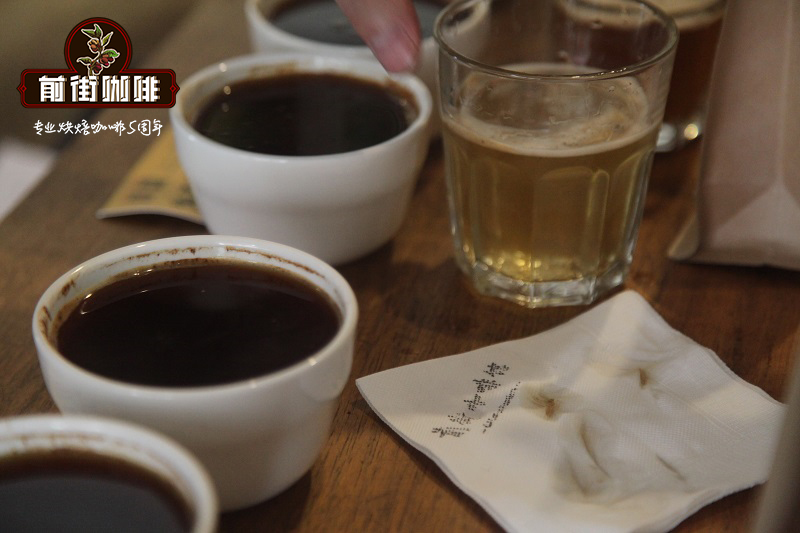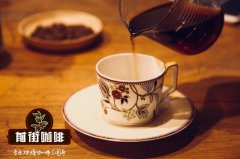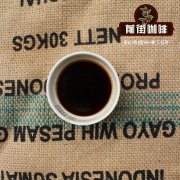Coffee cup testing science 36 flavors, taste buds, smell, brain association and comparison training tips

Professional coffee knowledge exchange more coffee bean information please follow the coffee workshop (Wechat official account cafe_style)
The cup test is a standard for high-quality coffee, and it is almost unusual to form a more mature coffee cup test standard after the 1990s. When it comes to cup testing, we have to mention coffee roasting again, because in the past, people in Europe and America drank coffee, especially in the 1960s, most of them only chose its roasting method. At that time, there was no standard for roasting, only habits, and each roaster recognized that medium-deep roasting was not consistent with deep roasting, although there were so-called City Roast, Northern Italian,French Roast at that time. Etc., but this way of discrimination from shallow to deep is mostly free evidence. It was not until the appearance of the Agtron Eagram table in 1996 that baking was regarded as the basic standard. Friends who want to know more about it can check the value of Agtron themselves. The cup test is closely related to the roasting and the producing area of raw beans, because the cup test Cupping measures the roasted coffee beans, and the degree of roasting can show a lot of tastes, including: Aroma, the smell intensity of coffee; Body, the weight of coffee in the mouth; Flavor is the taste of coffee in the mouth when it enters the mouth, like red wine. Acidity is the style in which coffee is sour, such as mild or sharp; Sweetness is the sweetness of the coffee liquid retained in the mouth; and Aftertaste is the flavor and smell left after the coffee is tasted and vomited in the mouth.
Authoritative organizations such as SCAA and COE have more standards and requirements for cup testing, such as "Fragrance", "uniformity", "clean cup", "mouth feel", "overall", "taint", "fault" and so on.
Why the cup test?
The purpose of the cup test is to taste the coffee. Cup testing can help people decide how to mix coffee, or whether coffee should be used to make espresso or hand-brewed coffee. Cup testing can also help people tap the potential of coffee and identify the tiniest taste features. Through the cup test, we can compare the flavor of different plantations, different producing areas, different countries and different batches of coffee, and then better understand the characteristics of each type of coffee.
The most critical moment of cup testing is the "broken shell". This step can fully release the aroma of the coffee. Be sure to calm down and smell the aroma of the coffee after the "broken shell", and then start tasting it. After breaking the shell, you need to gently stir the coffee to let the rest of the coffee grounds sink to the bottom, and the coffee grounds floating on the surface must be skimmed off.
Once the coffee grounds on the surface are all cleaned up, you can start tasting. Don't be afraid that the sound of smoking coffee is not standard, because everyone's voice is different. Personally, I will try to keep my voice down when drinking coffee, but others may tell you that the louder the better. Scoop a spoonful of coffee with a deeper spoon, close to the lips, suck the coffee into the mouth and spray it fully into the mouth. The inhalation will form a stream of coffee "steam", making it easier to detect the various tastes and aromas of the coffee.
Whether you are a beginner or an expert, you must record your true feelings at any time during the cup test. you can download the standard "coffee flavor wheel" online and compare it with the "flavor wheel" after the cup test. check to see if your description is accurate.
Important Notice :
前街咖啡 FrontStreet Coffee has moved to new addredd:
FrontStreet Coffee Address: 315,Donghua East Road,GuangZhou
Tel:020 38364473
- Prev

What's the difference between Hong Kong's first mandarin duck coffee and an ordinary latte? The way of making Yuanyang Coffee
Professional coffee knowledge exchange more coffee bean information please follow the coffee workshop (Wechat official account cafe_style) Hong Kong-style mandarin duck coffee and ordinary latte coffee the biggest difference is the formula is different! Mandarin duck is a new type of coffee popular in Hong Kong. Half of the collocation, hence the name mandarin duck. Because coffee is a dry and hot drink, black tea is a warm and cool drink, which seems to symbolize
- Next

The origin of Kopi Luwak will you still drink Kopi Luwak after its history? The living environment of civets
Professional coffee knowledge exchange more coffee bean information please pay attention to the coffee workshop (Wechat official account cafe_style) civet coffee (Kopi Luwak), also known as Kopi Luwak, it is the civet in the coffee fruit after eating the coffee beans intact, people extract the coffee beans in its feces and processed. The coffee is produced in Indonesia.
Related
- How did the Salvadoran coffee industry develop in Central America?
- What exactly does the golden cup extraction of coffee mean?
- The Origin of Coffee flower
- [2023 Starbucks World Earth Day] there are more meaningful things besides free Starbucks coffee!
- What kind of coffee is there in Spain? 9 Flavors of Spanish Coffee
- Aromatic African coffee| Kenya's coffee culture and historical production area
- Liberica Coffee Bean knowledge: the characteristics of Liberian Coffee beans of the three original species of Coffee beans
- The origin and formula of Spanish latte introduces the taste characteristics of Bombon coffee in Valencia, Spain.
- How to adjust the solution of over-extracted coffee
- What is the tasting period of coffee beans? What is the period of coffee and beans? How should coffee wake up and raise beans?

